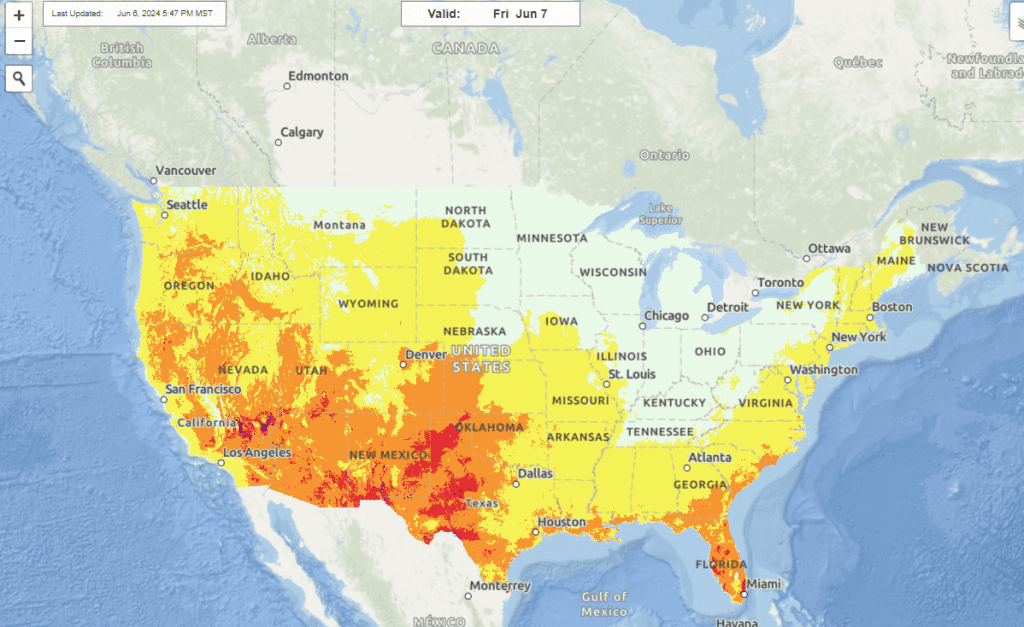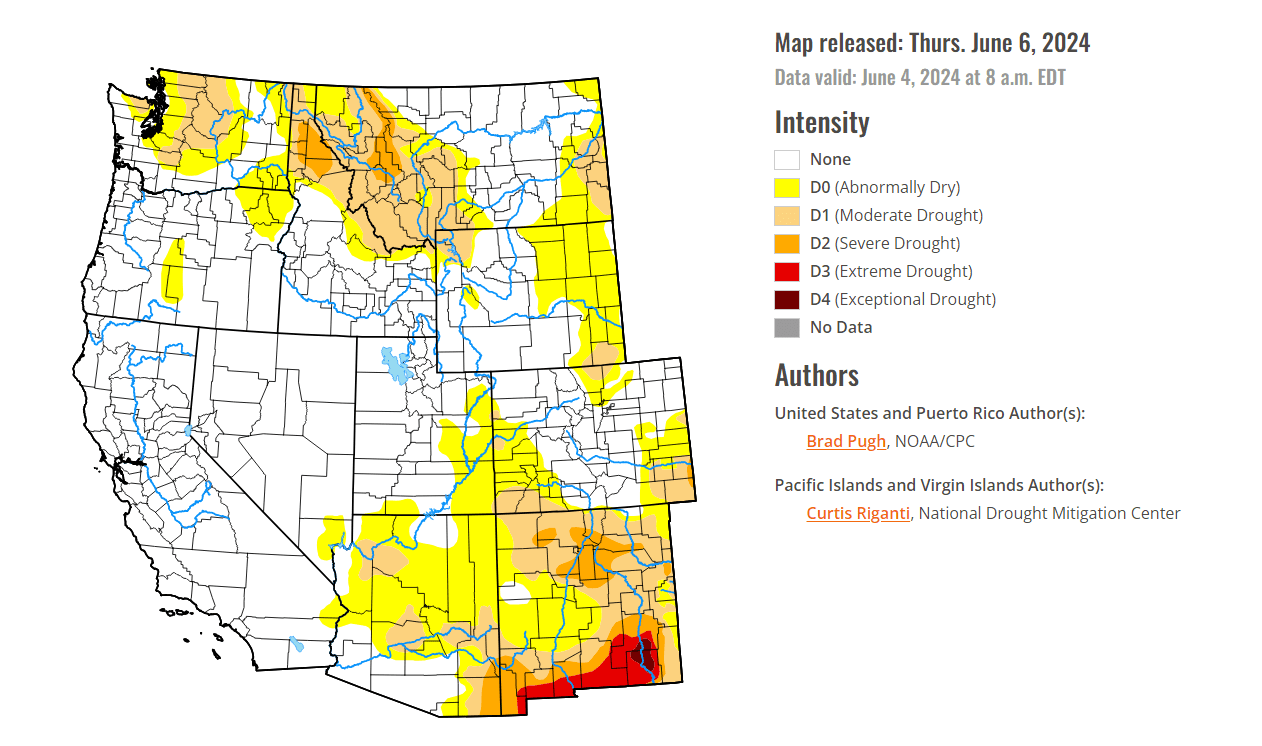- Heavy precipitation improves drought conditions in parts of the West.
- Heat wave expected in Southwest and Central Valley of California.
- Above-normal temperatures forecasted across most of the West.
June 7, 2024 — The U.S. Drought Monitor and the National Integrated Drought Information System released an update yesterday, indicating varied changes in drought conditions across the western United States . As May transitioned into June, the climatology in California, the Great Basin, and the Southwest became significantly drier, resulting in little to no change in drought coverage in these regions.
. As May transitioned into June, the climatology in California, the Great Basin, and the Southwest became significantly drier, resulting in little to no change in drought coverage in these regions.
However, certain areas saw notable improvements, such as northeastern New Mexico, where heavy precipitation, exceeding 1.5 inches in some places, led to a one-category improvement in drought conditions.
Weather Forecast.
Short-Term Outlook (June 6–10, 2024).
Dry weather is expected for the Southwest and California, typical for this time of year. Additionally, a heat wave will impact the Southwest and the Central Valley of California in early June.
Medium-Term Outlook (June 11–15, 2024).
The Climate Prediction Center ’s 6-10 day outlook predicts above-normal temperatures across most of the western United States. In contrast, above-normal precipitation is favored for the southern Rockies.
’s 6-10 day outlook predicts above-normal temperatures across most of the western United States. In contrast, above-normal precipitation is favored for the southern Rockies.
This mixed forecast highlights the dynamic and varied nature of weather patterns affecting drought conditions in the western United States. While some areas experience relief through precipitation, others continue to face persistent drought and heat.

 Screenshot
ScreenshotHeat Dome Sweeps Western U.S., Bringing Record Highs.
- A heat dome is causing dangerously high temperatures across the Western U.S.
- 20 million Americans are under excessive heat advisories.
- Heat is the deadliest weather-related hazard in the U.S.
- A new HeatRisk index map helps visualize the risks.
A massive heat dome has settled over the Western United States, bringing with it dangerously high temperatures that are shattering records for early June. The National Weather Service reports that the heat dome is causing temperatures to soar 20 to 30 degrees above normal, with cities like Phoenix and Las Vegas expected to reach a scorching 112 degrees Fahrenheit. The sweltering conditions are not limited to daytime hours, as overnight temperatures are only expected to drop to the low 80s, offering little relief from the heat.
has settled over the Western United States, bringing with it dangerously high temperatures that are shattering records for early June. The National Weather Service reports that the heat dome is causing temperatures to soar 20 to 30 degrees above normal, with cities like Phoenix and Las Vegas expected to reach a scorching 112 degrees Fahrenheit. The sweltering conditions are not limited to daytime hours, as overnight temperatures are only expected to drop to the low 80s, offering little relief from the heat.
As of Wednesday, an estimated 20 million Americans from California to Texas were living under federal excessive heat advisories, with an additional 11 million under heat advisories. The widespread impact of this heatwave underscores the importance of taking precautions and staying informed about the risks.
Heat is the most lethal weather-related hazard in the United States, posing a particular threat to children, the elderly, and individuals with chronic health conditions. To help raise awareness and visualize the potential dangers of extreme heat, NOAA and the Centers for Disease Control and Prevention have collaborated on a new tool called the HeatRisk index . This color-coded map provides a seven-day forecast, allowing users to assess the health risks associated with the heat in their area.
. This color-coded map provides a seven-day forecast, allowing users to assess the health risks associated with the heat in their area.


Wondering how long this heat dome will last.